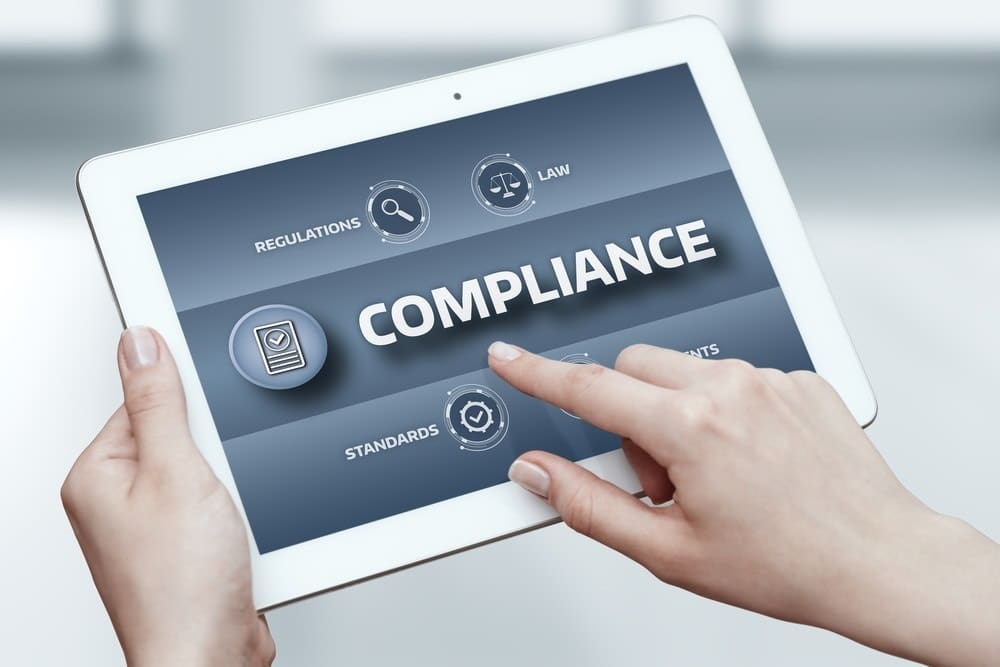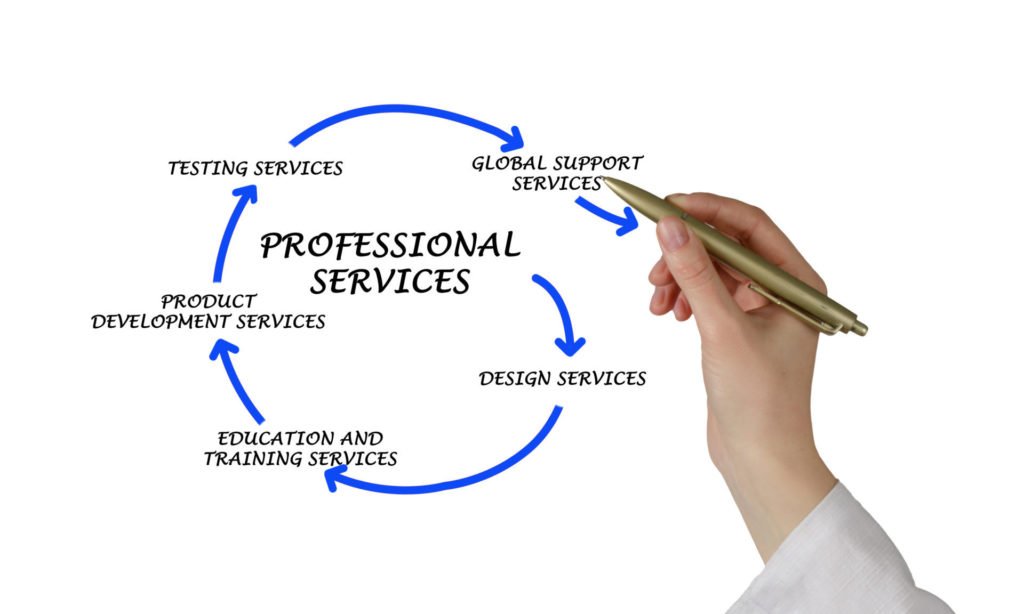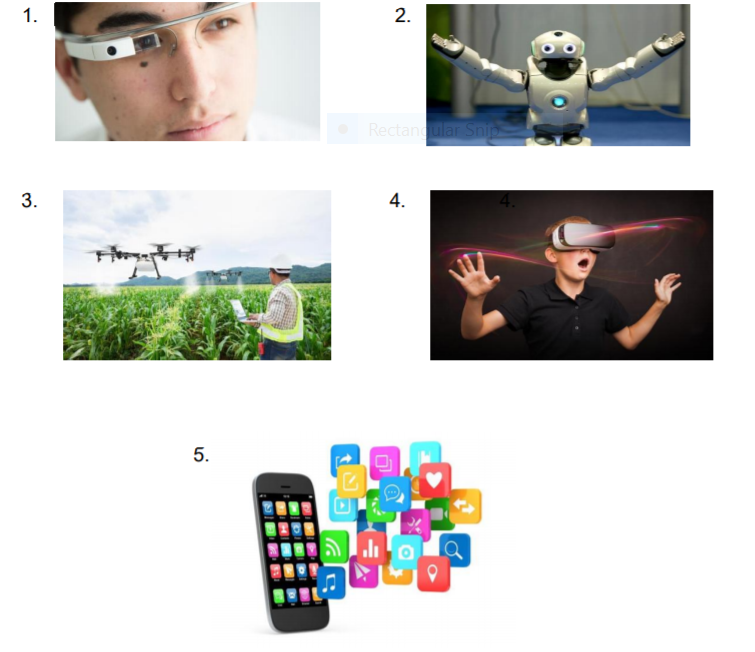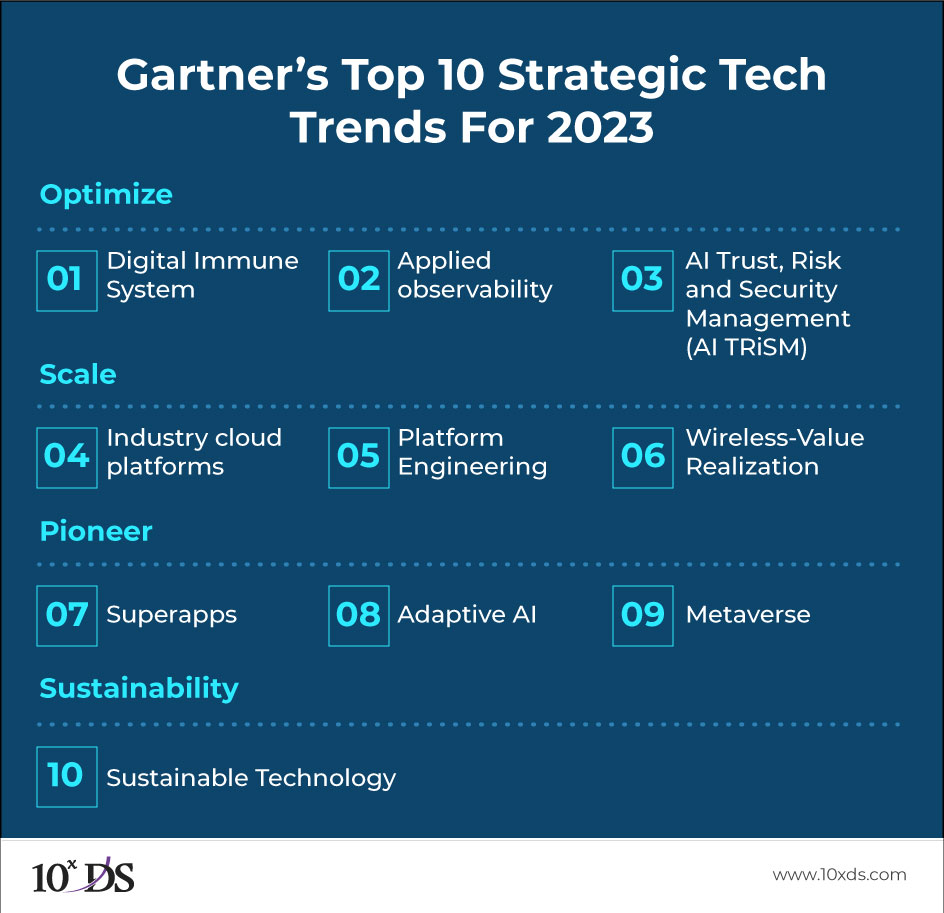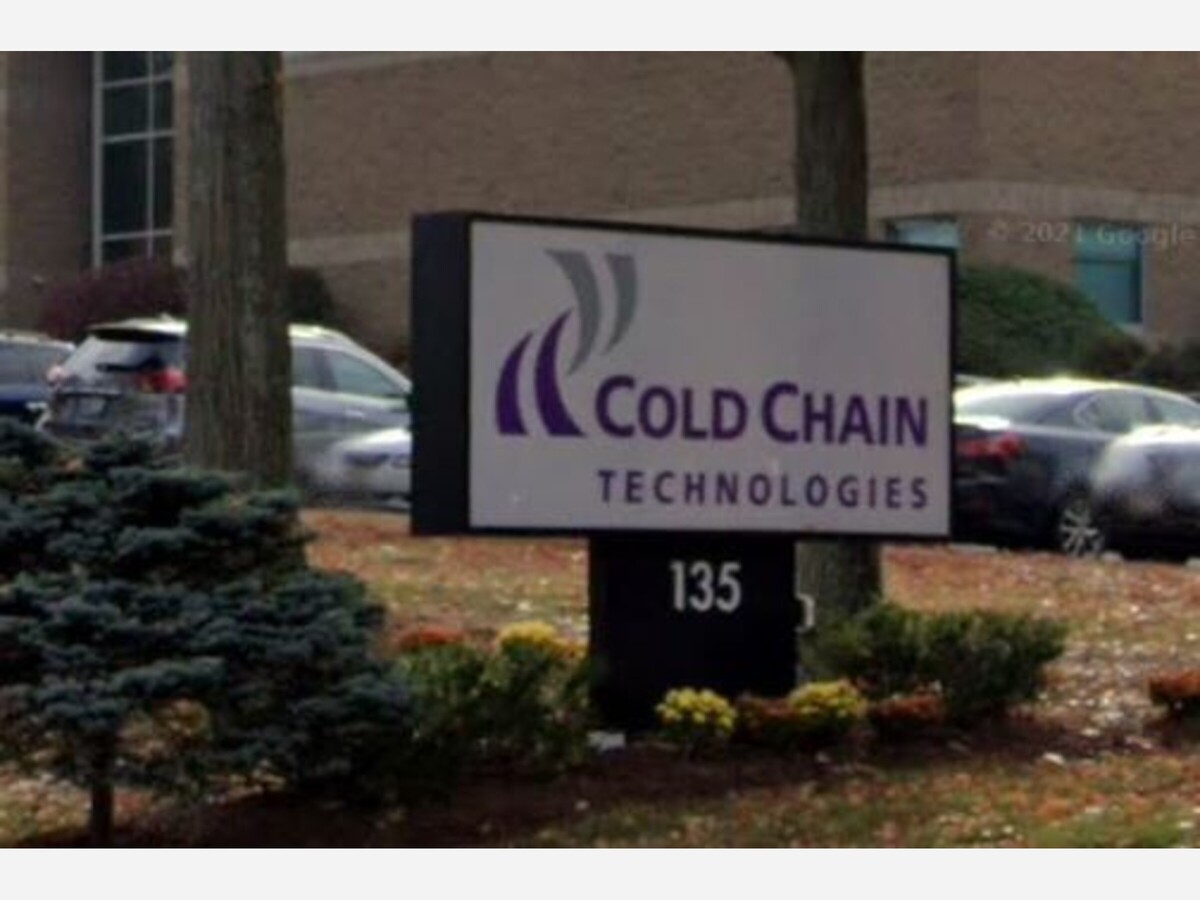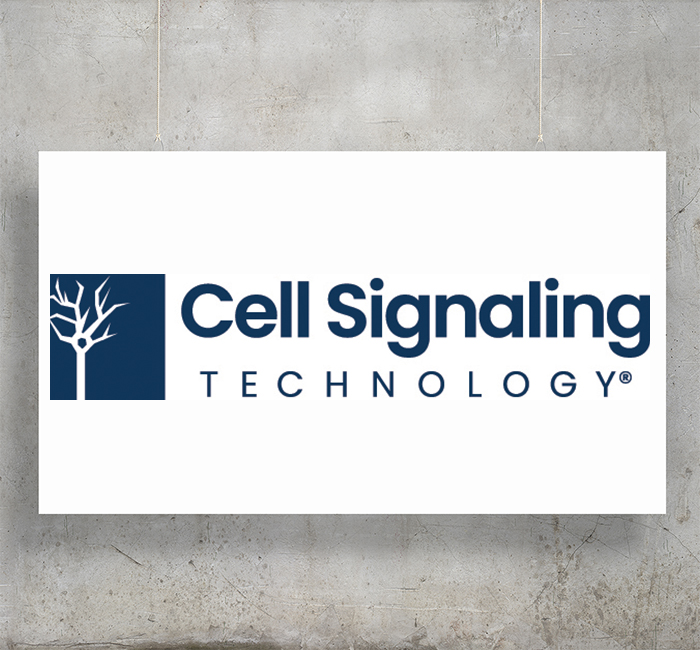Applied Business and Technology Solutions: Shaping the Future
Applied business and technology solutions are transforming industries at an unprecedented pace. From artificial intelligence and cloud computing to blockchain and the Internet of Things, these technologies are revolutionizing how […]

Applied business and technology solutions are transforming industries at an unprecedented pace. From artificial intelligence and cloud computing to blockchain and the Internet of Things, these technologies are revolutionizing how businesses operate, interact with customers, and make decisions. This exploration delves into the dynamic landscape of applied business and technology solutions, examining the trends, key technologies, challenges, and opportunities that are shaping the future of commerce.
The integration of technology into business is no longer a luxury but a necessity. Companies across sectors are embracing innovative solutions to optimize processes, enhance customer experiences, and gain a competitive edge. This exploration will examine real-world examples of successful technology implementations, highlighting the impact these solutions have on businesses and the wider economy.
Defining the Landscape
The intersection of business and technology is a dynamic landscape constantly reshaped by emerging trends. Technological advancements are fundamentally altering how businesses operate, compete, and interact with customers. This evolution is driven by a confluence of factors, including the rise of artificial intelligence (AI), the pervasiveness of data, and the growing importance of digital transformation.
The Evolving Role of Technology Across Industries
The impact of technology is felt across all industries, with businesses leveraging digital tools to enhance efficiency, improve customer experiences, and unlock new revenue streams.
- Retail: Online shopping, personalized recommendations, and omnichannel strategies are transforming the retail landscape. Businesses like Amazon and Alibaba have successfully integrated technology to create seamless customer journeys, leveraging data analytics to predict consumer behavior and optimize inventory management.
- Healthcare: Telemedicine, wearable devices, and AI-powered diagnostics are revolutionizing healthcare delivery. Companies like Teladoc and Babylon Health provide virtual consultations, while Fitbit and Apple Watch monitor health data and offer personalized insights. AI is being used to analyze medical images, assist in drug discovery, and personalize treatment plans.
- Manufacturing: The adoption of Industry 4.0 technologies, such as robotics, automation, and the Internet of Things (IoT), is driving efficiency and productivity in manufacturing. Companies like Siemens and GE are leveraging these technologies to optimize production processes, improve quality control, and enable predictive maintenance.
- Finance: Fintech companies are disrupting traditional financial services, offering innovative solutions for payments, lending, and investment. Companies like PayPal and Stripe have revolutionized online payments, while robo-advisors like Betterment and Wealthfront provide automated investment management.
Examples of Businesses Successfully Integrating Technology Solutions
Numerous businesses are demonstrating the transformative power of technology integration.
- Netflix: Netflix’s success can be attributed to its strategic use of technology. The streaming giant leverages data analytics to understand user preferences, personalize recommendations, and create original content that resonates with its audience. Their recommendation engine is powered by AI, analyzing user viewing history and preferences to suggest relevant content.
- Uber: Uber has disrupted the transportation industry by leveraging technology to connect riders and drivers efficiently. Their platform utilizes GPS tracking, real-time pricing, and payment processing to create a seamless and convenient experience for users.
- Tesla: Tesla’s electric vehicles are powered by cutting-edge technology, including AI-driven autonomous driving features and over-the-air software updates. Tesla’s approach to technology integration has made them a leader in the automotive industry, driving innovation and pushing the boundaries of what is possible.
Key Technologies and Applications: Applied Business And Technology Solutions
The convergence of technology and business has ushered in a new era of transformation, where organizations leverage innovative solutions to optimize operations, enhance customer experiences, and gain a competitive edge. This section explores the key technologies driving this revolution and their specific applications across diverse industries.
Artificial Intelligence (AI)
AI encompasses a range of technologies that enable machines to perform tasks that typically require human intelligence, such as learning, problem-solving, and decision-making. AI applications are rapidly transforming various sectors, from healthcare to finance.
- Healthcare: AI-powered diagnostic tools analyze medical images, identify patterns, and predict patient outcomes, improving accuracy and efficiency in disease detection and treatment planning. For instance, IBM Watson for Oncology leverages AI to provide personalized cancer treatment recommendations based on a patient’s specific medical history and genetic profile.
- Finance: AI algorithms analyze financial data to detect fraud, predict market trends, and automate trading decisions. Robo-advisors utilize AI to provide personalized investment advice based on an individual’s financial goals and risk tolerance. For example, Betterment, a leading robo-advisor platform, uses AI to manage investment portfolios, automating the process of asset allocation and rebalancing.
- Retail: AI-powered chatbots provide personalized customer support, answer queries, and recommend products, enhancing customer experience and driving sales. Amazon’s recommendation engine, powered by AI, analyzes user behavior and purchase history to suggest relevant products, contributing to the company’s success in e-commerce.
Cloud Computing
Cloud computing refers to the delivery of computing services—including servers, storage, databases, networking, software, analytics, and intelligence—over the internet (“the cloud”). It offers scalability, flexibility, and cost-effectiveness, making it an essential technology for businesses of all sizes.
- Software as a Service (SaaS): Cloud-based software applications like Salesforce and Microsoft Office 365 enable businesses to access and manage their software remotely, reducing infrastructure costs and simplifying IT management.
- Infrastructure as a Service (IaaS): Cloud providers like Amazon Web Services (AWS) and Microsoft Azure offer virtualized computing resources, such as servers and storage, on demand, allowing businesses to scale their infrastructure up or down as needed.
- Platform as a Service (PaaS): Platforms like Google App Engine and Heroku provide a complete development environment for building and deploying applications, simplifying the software development process and reducing time to market.
Internet of Things (IoT)
The IoT refers to the network of interconnected devices, vehicles, buildings, and other objects that collect and exchange data through sensors, actuators, and other technologies. It enables businesses to gain real-time insights into operations, improve efficiency, and create new revenue streams.
- Manufacturing: IoT sensors monitor equipment performance, detect anomalies, and predict maintenance needs, reducing downtime and improving productivity. For example, General Electric’s Predix platform uses IoT data to optimize manufacturing processes, enabling predictive maintenance and real-time performance monitoring.
- Transportation: Connected vehicles equipped with sensors and communication capabilities enable real-time traffic monitoring, fleet management, and driver safety features. For instance, Tesla’s Autopilot system utilizes IoT data to enable semi-autonomous driving capabilities, improving safety and efficiency on the road.
- Smart Cities: IoT-enabled smart cities utilize sensors to monitor traffic flow, air quality, and energy consumption, optimizing resource allocation and improving the quality of life for residents. For example, the City of Barcelona’s Smart City initiative leverages IoT data to optimize street lighting, manage waste collection, and improve public transportation efficiency.
Blockchain Technology
Blockchain is a distributed ledger technology that enables secure and transparent transactions across a network of computers. It is gaining traction in various sectors, revolutionizing industries like finance, supply chain management, and healthcare.
- Finance: Blockchain-based cryptocurrencies like Bitcoin and Ethereum are gaining popularity as decentralized alternatives to traditional financial systems. Blockchain technology also enables secure and efficient cross-border payments, reducing transaction costs and processing time. For example, Ripple, a blockchain-based payment network, facilitates faster and cheaper international payments for financial institutions.
- Supply Chain Management: Blockchain enables secure and transparent tracking of goods throughout the supply chain, reducing counterfeiting and improving traceability. For example, Walmart uses blockchain technology to track the origin and movement of its food products, enhancing transparency and safety for consumers.
- Healthcare: Blockchain technology enables secure and private storage and sharing of patient medical records, enhancing data security and improving interoperability between healthcare providers. For example, MedRec, a blockchain-based medical record platform, allows patients to control their medical data and share it securely with authorized healthcare providers.
Big Data and Analytics
Big data refers to the vast amount of structured and unstructured data generated by businesses, individuals, and devices. Analytics tools enable organizations to extract valuable insights from this data, enabling data-driven decision-making and improving business outcomes.
- Marketing: Data analytics helps businesses understand customer behavior, personalize marketing campaigns, and optimize advertising spend. For example, Netflix uses data analytics to recommend movies and TV shows to its users, enhancing customer engagement and driving subscriptions.
- Operations: Data analytics can optimize production processes, identify bottlenecks, and improve efficiency in supply chain management. For example, Amazon uses data analytics to optimize its warehouse operations, reducing delivery times and improving customer satisfaction.
- Risk Management: Data analytics can help businesses identify and mitigate risks, improving financial performance and ensuring compliance with regulations. For example, banks use data analytics to detect fraudulent transactions and prevent financial losses.
Cybersecurity
Cybersecurity is critical for protecting businesses from cyberattacks, data breaches, and other threats. Advancements in cybersecurity technologies are crucial for safeguarding sensitive information and ensuring business continuity.
- Threat Intelligence: Cybersecurity tools analyze threat data to identify potential threats, predict attacks, and implement preventative measures. For example, CrowdStrike’s Falcon platform uses threat intelligence to detect and respond to cyberattacks in real time.
- Endpoint Security: Endpoint security solutions protect devices like laptops, smartphones, and servers from malware and other threats. For example, Symantec’s Endpoint Protection platform provides comprehensive protection against a wide range of threats, including viruses, ransomware, and phishing attacks.
- Data Loss Prevention (DLP): DLP solutions prevent sensitive data from leaving the organization’s network, protecting confidential information from unauthorized access. For example, McAfee’s Data Loss Prevention platform helps businesses identify and control the flow of sensitive data, preventing leaks and breaches.
Virtual and Augmented Reality (VR/AR)
VR/AR technologies create immersive experiences that enhance user interaction and engagement. These technologies are finding applications in various industries, from gaming and entertainment to training and education.
- Gaming and Entertainment: VR/AR technologies create immersive and interactive gaming experiences, blurring the lines between reality and virtual worlds. For example, Oculus Rift and HTC Vive are popular VR headsets that offer realistic and engaging gaming experiences.
- Training and Education: VR/AR technologies provide realistic simulations for training purposes, allowing users to practice skills in a safe and controlled environment. For example, Boeing uses VR to train pilots on new aircraft models, reducing training costs and improving safety.
- Retail: VR/AR technologies enhance the shopping experience by allowing customers to visualize products in their homes or try on clothes virtually. For example, IKEA uses AR technology to allow customers to visualize furniture in their homes before purchasing.
Challenges and Opportunities

The integration of technology solutions into business operations presents both significant challenges and opportunities. Understanding these aspects is crucial for organizations seeking to leverage technology effectively and gain a competitive edge.
Challenges of Implementing Technology Solutions
Implementing technology solutions within a business can be complex and multifaceted, presenting several challenges. These challenges often stem from a combination of technical, organizational, and human factors.
- Cost and Investment: Implementing new technologies requires significant financial investment, encompassing hardware, software, training, and ongoing maintenance. The cost of acquiring and deploying these solutions can be a major hurdle for businesses, especially smaller enterprises with limited budgets.
- Complexity and Integration: Modern technology solutions often involve complex systems and intricate integration processes. Ensuring seamless integration with existing systems and processes can be a challenging task, requiring specialized expertise and careful planning.
- Data Security and Privacy: With the increasing reliance on technology, data security and privacy become paramount concerns. Organizations must implement robust security measures to protect sensitive data from breaches, cyberattacks, and unauthorized access. This includes complying with relevant data protection regulations, such as GDPR and CCPA.
- Change Management and Resistance: Introducing new technologies can disrupt established workflows and require employees to adapt to new ways of working. Resistance to change can arise from fear of the unknown, lack of training, or concerns about job security. Effective change management strategies are essential to mitigate resistance and ensure successful adoption.
- Skills Gap and Talent Acquisition: Implementing and maintaining technology solutions requires a skilled workforce. However, there is often a gap between the skills needed and the available talent pool. Organizations may face challenges in recruiting and retaining skilled professionals, especially in rapidly evolving technology fields.
Opportunities Arising from Technological Advancements, Applied business and technology solutions
Despite the challenges, technological advancements offer businesses numerous opportunities for growth, efficiency, and innovation.
- Increased Efficiency and Productivity: Automation and intelligent systems can streamline business processes, reduce manual tasks, and enhance productivity. For example, customer relationship management (CRM) systems can automate customer interactions, freeing up employees to focus on more strategic tasks. This can lead to significant cost savings and improved operational efficiency.
- Enhanced Customer Experience: Technology enables businesses to provide personalized and engaging customer experiences. E-commerce platforms, chatbots, and mobile apps offer customers convenient and accessible ways to interact with businesses. This can lead to increased customer satisfaction, loyalty, and ultimately, higher sales.
- New Business Models and Revenue Streams: Technology is driving the emergence of new business models and revenue streams. For example, the rise of the sharing economy has created opportunities for businesses to offer services on a subscription basis or through peer-to-peer platforms. This can lead to new markets and increased revenue generation.
- Data-Driven Decision Making: Technology provides access to vast amounts of data, allowing businesses to gain valuable insights and make data-driven decisions. Business intelligence (BI) tools and analytics platforms can help organizations analyze data trends, identify opportunities, and optimize operations. This can lead to improved decision-making, increased profitability, and competitive advantage.
- Innovation and Competitive Advantage: Technology enables businesses to innovate and develop new products and services. For example, artificial intelligence (AI) and machine learning (ML) are transforming industries by automating tasks, improving accuracy, and creating personalized experiences. This can give businesses a significant competitive edge in the marketplace.
Approaches to Addressing Technology Integration Challenges
Organizations can adopt various approaches to address the challenges of technology integration.
- Phased Implementation: This approach involves implementing technology solutions in stages, starting with a pilot project to test the solution and identify potential challenges. This allows for a more gradual transition and reduces the risk of disruption to existing operations. For example, a company might initially implement a new CRM system for a specific department or sales team before rolling it out to the entire organization.
- Outsourcing: Businesses can outsource specific technology tasks, such as system integration or data management, to specialized vendors. This can provide access to expertise and resources that may not be available internally. However, outsourcing can also raise concerns about data security and control.
- Partnerships: Collaborating with technology partners can provide access to specialized skills, resources, and solutions. Partnerships can help organizations overcome challenges related to implementation, integration, and ongoing support. For example, a company might partner with a cloud provider to manage its IT infrastructure or with a software development company to build custom applications.
- Training and Development: Investing in employee training and development is crucial for successful technology adoption. Providing employees with the necessary skills and knowledge can help them adapt to new technologies, overcome resistance, and utilize solutions effectively. This can include training programs on new software, online courses, and mentorship programs.
- Change Management: Implementing effective change management strategies is essential for minimizing resistance and ensuring successful technology adoption. This involves communicating the benefits of the new technology, providing clear guidance and support, and addressing employee concerns. Change management strategies should be tailored to the specific needs of the organization and the technology being implemented.
Strategic Considerations
Strategic considerations play a crucial role in leveraging technology for business success. Businesses must carefully assess their needs, goals, and resources to develop a comprehensive technology strategy that aligns with their overall business objectives. This involves a structured approach to designing, implementing, and evaluating technology solutions.
Developing a Technology Strategy Framework
A well-defined technology strategy framework provides a roadmap for businesses to navigate the ever-evolving technological landscape. This framework should encompass the following key elements:
- Vision and Mission: Clearly articulate the business’s vision and mission, outlining its long-term goals and aspirations. This vision should be technology-enabled, reflecting how technology will play a pivotal role in achieving business objectives.
- Business Objectives and Key Performance Indicators (KPIs): Define specific business objectives and measure their progress using relevant KPIs. Technology investments should directly support these objectives and contribute to measurable improvements in KPIs.
- Technology Assessment and Gap Analysis: Conduct a thorough assessment of the business’s current technology infrastructure, capabilities, and limitations. Identify any gaps between the current state and the desired future state, and prioritize areas for technology investment.
- Technology Roadmap: Develop a roadmap outlining the strategic technology investments, timelines, and expected outcomes. This roadmap should be flexible and adaptable to changing market conditions and technological advancements.
- Governance and Management: Establish clear governance structures and processes for managing technology investments, ensuring alignment with business objectives and effective implementation.
- Risk Management: Identify and mitigate potential risks associated with technology investments, including security threats, data breaches, and technological obsolescence.
- Innovation and Future Trends: Stay abreast of emerging technologies and industry trends, and explore opportunities for innovation to maintain a competitive edge.
Integrating Technology Solutions Effectively
Integrating technology solutions seamlessly into existing business processes is crucial for maximizing their impact and achieving desired outcomes. This requires a systematic approach, involving the following steps:
- Planning and Requirements Gathering: Clearly define the business problem or opportunity that the technology solution aims to address. Gather detailed requirements, including user needs, data integration, and system functionalities.
- Solution Selection and Evaluation: Research and evaluate different technology solutions, considering factors such as cost, functionality, scalability, and vendor support. Select the solution that best meets the business needs and aligns with the technology strategy.
- Implementation and Configuration: Implement the chosen technology solution, configuring it to meet specific business requirements. This may involve customizing software, integrating with existing systems, and training users.
- Testing and Deployment: Conduct thorough testing to ensure the solution functions as expected and meets all requirements. Deploy the solution in a phased approach, starting with pilot projects and gradually scaling up.
- Monitoring and Optimization: Continuously monitor the performance of the technology solution, identifying areas for improvement and optimization. Regularly review and update the solution to adapt to changing business needs and technological advancements.
Evaluating Technology Investments
Businesses must carefully evaluate technology investments to ensure they align with their strategic objectives and deliver a positive return on investment (ROI). The following factors should be considered when evaluating technology investments:
- Business Value and ROI: Quantify the expected benefits of the technology investment, including increased efficiency, improved customer experience, and revenue growth. Calculate the ROI to determine the financial viability of the investment.
- Cost and Budget: Analyze the total cost of ownership (TCO), including hardware, software, implementation, maintenance, and ongoing support. Ensure the investment fits within the allocated budget and aligns with financial constraints.
- Technical Feasibility and Compatibility: Assess the technical feasibility of the technology solution, considering its compatibility with existing systems and infrastructure. Ensure the solution can be integrated seamlessly and meet performance requirements.
- Security and Data Privacy: Evaluate the security implications of the technology investment, including data protection, access control, and compliance with relevant regulations. Ensure the solution safeguards sensitive data and complies with industry best practices.
- Vendor Reputation and Support: Research the vendor’s reputation, track record, and support services. Choose vendors with a proven track record, reliable support, and a commitment to ongoing innovation.
- Scalability and Flexibility: Consider the scalability and flexibility of the technology solution, ensuring it can adapt to future business growth and changing requirements. Select solutions that can be easily expanded and customized to meet evolving needs.
The Future of Applied Business and Technology Solutions
The convergence of emerging technologies is poised to revolutionize the business landscape, driving unprecedented levels of innovation, efficiency, and customer experience. From artificial intelligence (AI) and blockchain to the Internet of Things (IoT) and cloud computing, these technologies are transforming industries, creating new opportunities, and reshaping the very fabric of how businesses operate.
The Impact of Emerging Technologies on Industries
Emerging technologies are poised to transform various industries, creating new opportunities and challenges. Here are some examples:
- Retail: AI-powered personalized recommendations, augmented reality (AR) shopping experiences, and automated inventory management are enhancing customer engagement and operational efficiency.
- Healthcare: Telemedicine, AI-assisted diagnosis, and personalized medicine are improving patient care, reducing costs, and expanding access to healthcare services.
- Manufacturing: Smart factories equipped with IoT sensors, robotics, and AI are optimizing production processes, reducing waste, and improving product quality.
- Finance: Blockchain technology is enabling secure and transparent transactions, while AI-driven fraud detection systems are strengthening financial security.
- Transportation: Autonomous vehicles, drone delivery, and intelligent traffic management systems are transforming mobility, reducing congestion, and improving safety.
The Evolving Role of Technology in Business Decision-Making
Technology is becoming increasingly integral to business decision-making, empowering organizations to leverage data-driven insights and predictive analytics.
- Data-Driven Decision-Making: Businesses are increasingly relying on data analytics to identify trends, optimize operations, and make informed decisions.
- Predictive Analytics: AI and machine learning algorithms are enabling businesses to predict future outcomes, anticipate customer needs, and optimize resource allocation.
- Real-Time Insights: IoT sensors and data streaming platforms provide real-time insights into business operations, allowing for immediate adjustments and improved responsiveness.
The Future of Work
The rise of automation and AI is expected to reshape the future of work, creating new roles and requiring workers to adapt to evolving skill sets.
- Automation of Repetitive Tasks: AI and robotic process automation (RPA) are automating repetitive tasks, freeing up human workers to focus on more creative and strategic endeavors.
- Rise of New Roles: Emerging technologies are creating new roles, such as AI engineers, data scientists, and cybersecurity specialists.
- Upskilling and Reskilling: Workers will need to continuously upskill and reskill to remain competitive in the evolving job market.
The Importance of Ethical Considerations
As technology continues to advance, it is crucial to consider the ethical implications of its application in business.
- Data Privacy and Security: Businesses must prioritize data privacy and security, ensuring that sensitive information is protected from unauthorized access.
- Algorithmic Bias: AI algorithms can perpetuate existing biases, leading to unfair or discriminatory outcomes. It is essential to develop and deploy algorithms that are fair and unbiased.
- Job Displacement: The automation of jobs raises concerns about job displacement. Businesses and governments must work together to mitigate the potential impact on workers.
Concluding Remarks
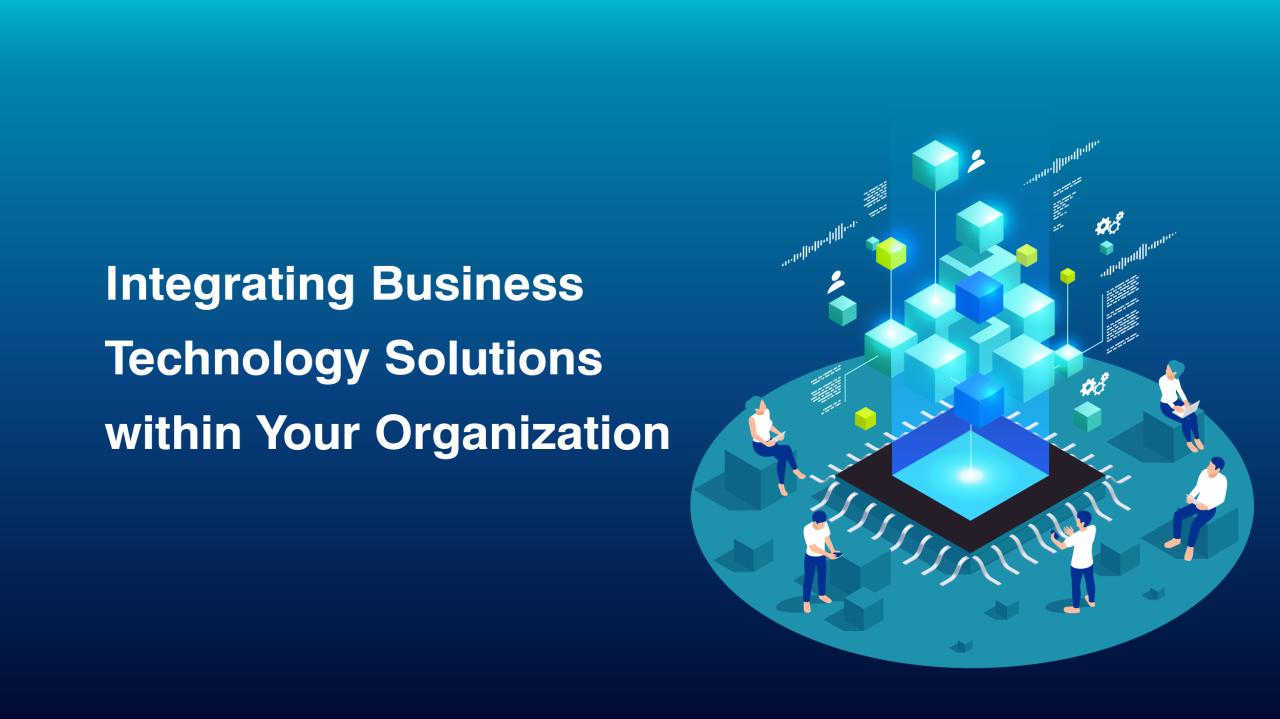
The convergence of business and technology continues to accelerate, creating both challenges and opportunities. By understanding the trends, technologies, and strategic considerations Artikeld in this exploration, businesses can navigate this dynamic landscape effectively. Embracing innovation and adopting the right technology solutions will be crucial for businesses to thrive in the future. As technology continues to evolve, businesses must remain agile and adaptable, constantly seeking new ways to leverage innovation for growth and success.
Applied business and technology solutions are essential for companies seeking to streamline operations and enhance efficiency. Roofix Technologies LLC is a prime example of a company leveraging innovative solutions to address specific industry needs, demonstrating the transformative power of technology in driving business success.
By integrating cutting-edge technologies, businesses can gain a competitive edge and optimize their operations for growth.
